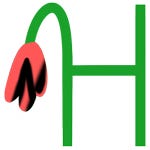It’s Dry January, and Why Are We Doing This Again?
Does repenting for your Wet December actually do anything for your health and well-being?
 Heineken’s January Dry Pack looks like an advent calendar but for nonalcoholic drinks. The pack contains 31 cans of 0.0% alcohol by volume beer — one for each day of January — hidden behind tear-off cutouts. Every day of the month, abstainers can enjoy the taste of a cold beer without cheating on their resolution to give up alcohol.
Heineken’s January Dry Pack looks like an advent calendar but for nonalcoholic drinks. The pack contains 31 cans of 0.0% alcohol by volume beer — one for each day of January — hidden behind tear-off cutouts. Every day of the month, abstainers can enjoy the taste of a cold beer without cheating on their resolution to give up alcohol.
“Dry January” is both a badge of honor and a kick-in-the-pants response to the guilt that can come with excess. You got a little too sloppy over the holidays; why not repent for your “Wet December” with a “Dry January”?
While the concept of a month without drinking isn’t novel (“detox” diets like Whole30 ask people to give up alcohol for 30 days), the New Year’s timing adds an extra element of “renewal.” Since people tend to drink more in November and December, a January free of alcohol can feel like an opportunity to reset and reconsider drinking habits.
Dry January unofficially started in 2011 when Emily Robinson, then the deputy CEO for a U.K. charity called Alcohol Concern, gave up drinking in January while training for a half marathon. Robinson was thrilled with the results: Not only did she lose…
